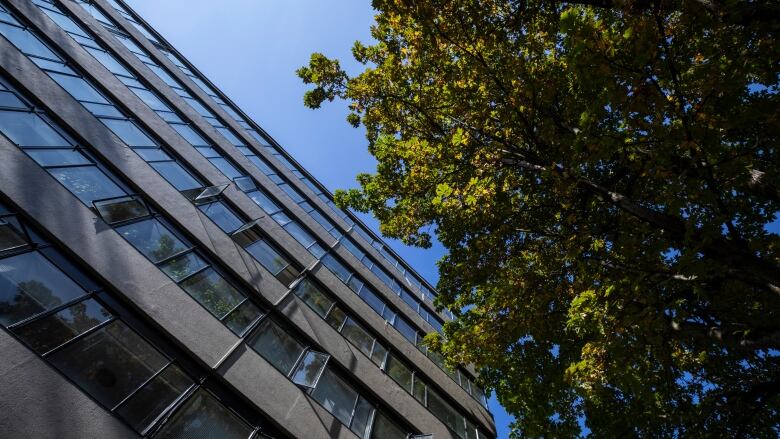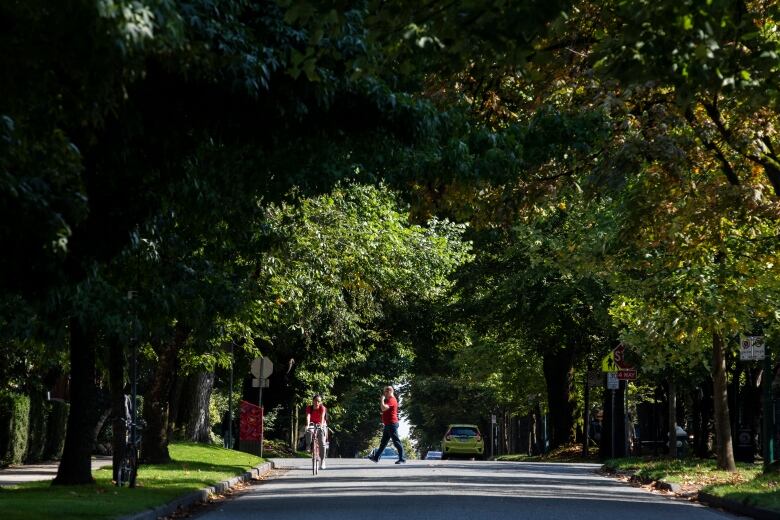High-density neighbourhoods leave room for trees, says Metro Vancouver
New report finds that high-rise neighbourhoods have more space for urban forest than those with big houses

Picture a green and leafy neighbourhood. If you're imagining houses with yards, a new report from Metro Vancouver urges you to think again.
Officials found that from about 1960 to 2000, areas with high-density housing, such as condo and apartment towers, had more treesthan areas withlow-density housing, such assingle-family detached homes.
"Let's really pay attention to how we are developing our communities and make sure that trees are a part of that," said Josephine Clark, a regional planner for Metro Vancouver and the author of the report.
"They are going to make our communities much more livable, sustainable places."

Trees in citiesprovidebenefitssuch as temperature controland carbon storage. They also help preventflooding andpollutionfrom storm water.
Trees squeezed out
Clark and her staff measured urban forests by their tree canopy cover: a score of how much land is covered with leaves and branches, as seen from the air.
The report found that tree canopy cover in single-family home neighbourhoods has fallen from 36 per cent for those built in 1970 to 18 per cent for those built in 2000.
Since the 1960s, a population boom resulted in subdivisionsand while lot sizes shrunk, the demand for larger homes increased. This resulted in less space for trees, according to the report.

As for high-density areas, new skyscraper-type buildings built in the 1960s, 70s and 80shad smaller footprints that allowed for more green space.
The report highlights Vancouver's West End, where large mature trees planted from the 1960s to the 1980shave matured into dense canopies over roads and around multi-unit homes.

Many municipalities are actively monitoring tree canopies with aims to either maintain them or increase them. But the report warned that the canopy cover in Metro Vancouver is expected to decrease in the future as more land is developed for housing.
Also, the trend of having a healthy canopy in high-density areas is notguaranteed to continue, said Clark, as some recentdevelopments with commercial space on the ground floor and residences above leave little room for tree planting.
Urban forest trouble
David Tracey, the author of the Vancouver Tree Book, said too many trees have been cut down, not replaced or kept alive since 2000 to keep urban forests thriving. Hot, dry summers due to climate change haven't helped either.
"The last 20 years have been a disaster for the urban forest," he said.
Still he is encouraged by the report and its nine recommendationswhich include continuous monitoring, planting more trees and public education.

Metro Vancouver's climate action committee was also enthusiastic about the report when it was presented on Friday.
Adriane Carr, the committee'schair and a Green Party Vancouver city councillor, saidmost politicians are savvy to the importance of urban trees.
"I think every effort we can make as municipalities and as the region to see the retention of trees ... is really important not only [for] climate mitigation ... but also from an urban and health point of view," she said.
The report also looked at impervious surfaces, such as paved roadsthat don't allow water to pass through them. They are are associated with negative effects in cities such as increased temperatures, flood risk and pollution.
It says about 50 per cent of urban areas in Metro Vancouverare made up of those surfaces, and cities that saw a loss of trees saw a corresponding rise in surfacessuch as roads and pavement.












_(720p).jpg)


 OFFICIAL HD MUSIC VIDEO.jpg)
.jpg)



























































































